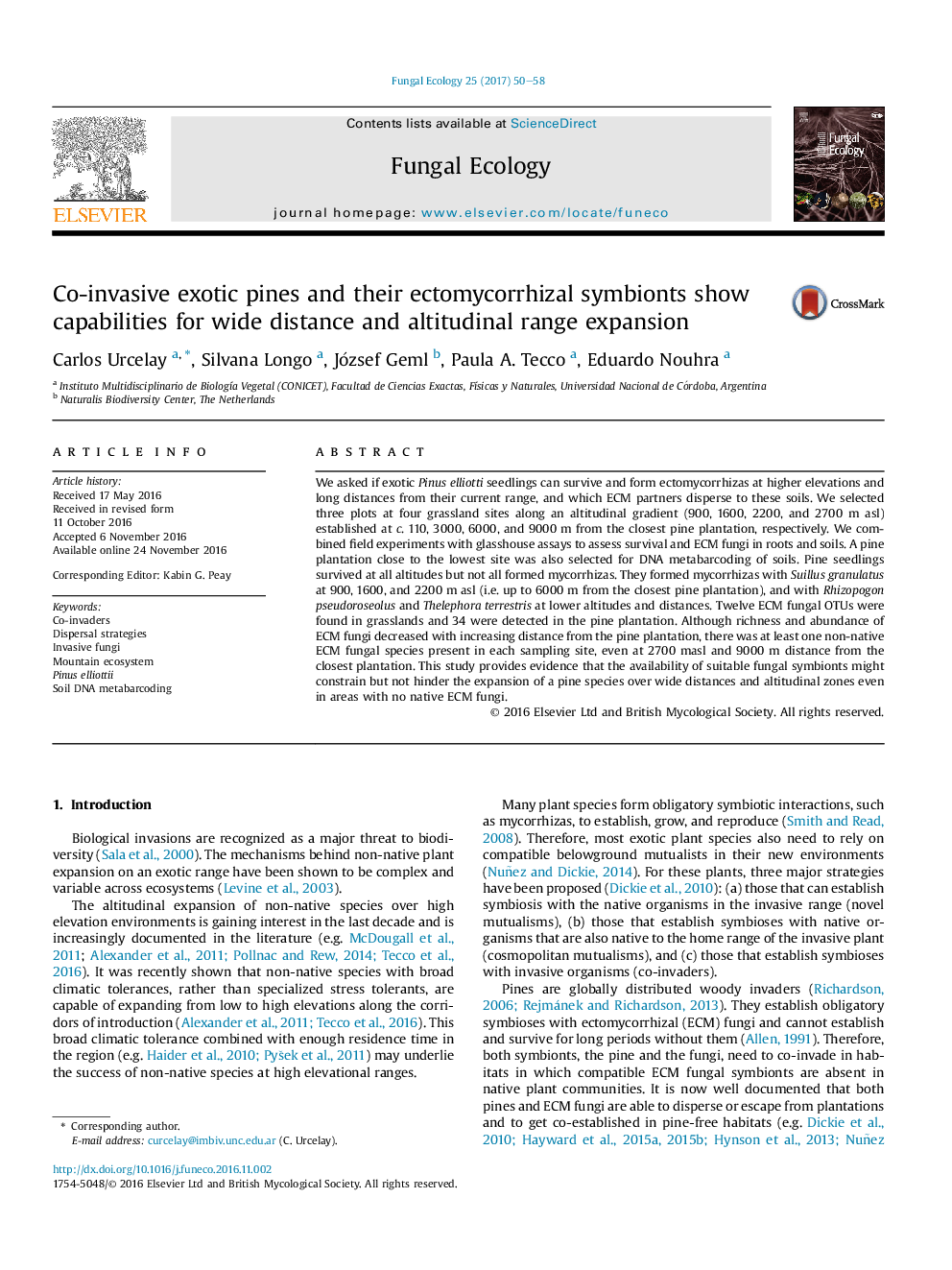| Article ID | Journal | Published Year | Pages | File Type |
|---|---|---|---|---|
| 5517707 | Fungal Ecology | 2017 | 9 Pages |
â¢Ectomycorrhizal fungi disperse over long distances from exotic pine plantations.â¢Ectomycorrhizal fungi show high altitude dispersal capabilities.â¢Suillus granulatus form ectomycorrhizas with pine seedlings very far from plantations.â¢Co-invasion by pines and ectomycorrhizal fungi is predicted in these mountains.
We asked if exotic Pinus elliotti seedlings can survive and form ectomycorrhizas at higher elevations and long distances from their current range, and which ECM partners disperse to these soils. We selected three plots at four grassland sites along an altitudinal gradient (900, 1600, 2200, and 2700Â m asl) established at c. 110, 3000, 6000, and 9000Â m from the closest pine plantation, respectively. We combined field experiments with glasshouse assays to assess survival and ECM fungi in roots and soils. A pine plantation close to the lowest site was also selected for DNA metabarcoding of soils. Pine seedlings survived at all altitudes but not all formed mycorrhizas. They formed mycorrhizas with Suillus granulatus at 900, 1600, and 2200Â m asl (i.e. up to 6000Â m from the closest pine plantation), and with Rhizopogon pseudoroseolus and Thelephora terrestris at lower altitudes and distances. Twelve ECM fungal OTUs were found in grasslands and 34 were detected in the pine plantation. Although richness and abundance of ECM fungi decreased with increasing distance from the pine plantation, there was at least one non-native ECM fungal species present in each sampling site, even at 2700 masl and 9000Â m distance from the closest plantation. This study provides evidence that the availability of suitable fungal symbionts might constrain but not hinder the expansion of a pine species over wide distances and altitudinal zones even in areas with no native ECM fungi.
